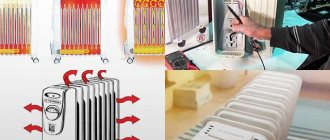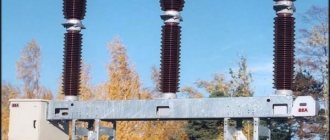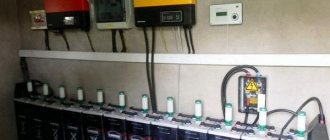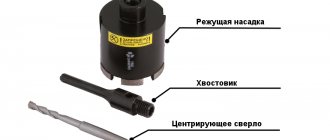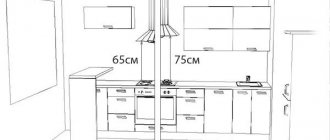Main advantages of use
Consider the pros and cons of heating convectors before purchasing. There are many more advantages, these are:
- safety;
- efficiency;
- environmental friendliness;
- ease of use;
- fast, uniform heating;
- durability;
- quiet work.
This applies to the best models of electric convectors and budget units. It’s just that in the first case, you can count on a wide range of additional functions and maximum ease of use.
There are also disadvantages, among them:
- low heating ability (takes a lot of time);
- raising dust from the floor;
- high energy costs for continuous operation of the heater;
- dry air.
A convector type heater, the pros and cons of which we indicated above, will be the optimal solution for domestic and commercial use. Many shortcomings can be smoothed out by choosing the right model. Carefully read the instructions on how to use the convector correctly - this will help you avoid many mistakes. High-quality installations are durable and reliable.
Types of convectors and their features
When considering the question of how to choose a convector heater for your home, you need to understand what types exist in principle. Water and gas models are ordered for private homes and industrial facilities. Their installation should be planned at the building design stage. Electric convector - what is it? The most versatile, simple and easy-to-use device. How an electric heating convector works - from a socket. It is more expensive to operate than gas or water, but it is simply easy to connect and use.
How to choose a convector heating device, taking into account the design of the heating element:
- simple tapes and spirals heat up quickly, are cheap, but not reliable enough, burn oxygen, and noticeably dry out the air;
- needle - the best convector heaters for home in the economy segment, nichrome loops are sewn inside the dielectric strip, they work quickly, they dry the air, but they are smaller than tape and spiral devices;
- with heating elements - the spiral is hidden in a hollow tubular structure, the outer surface is made ribbed in order to increase thermal output, the heating convector design causes a relatively low efficiency, the installation may crack during operation, heating takes a long time;
- monolithic - here the filament is soldered inside the housing with aluminum fins, heat transfer is good, reliability and efficiency indicators are high, IP24 moisture protection is usually provided.
Among the technical characteristics of convectors, the type of thermostat is important. Available options are removable or built-in. The thermostat optimizes heating processes and is responsible for maintaining optimal stable temperatures. When choosing an electric convector, you can choose thermostats:
- mechanical - they have a simple design, are reliable, and do not require complex settings;
- electronic type - accurate, regardless of model category, but expensive.
And lastly, what types of electric heating convectors are there, taking into account the type of installation. Almost all devices in this category are wall-mounted. Electric models can be additionally equipped with floor supports (with or without wheels).
Types of thermostats
Options for thermostats
The electric heat convector has 2 control options - mechanical and electronic. Each design principle has its own characteristics:
- Mechanical control is provided through a relay and a toggle switch. A control system of this type is not relevant and is becoming a thing of the past. But climate control technology with the mechanical principle of thermoregulation is in demand due to its low cost.
- Electronic thermostats are more accurate and practical. Control allows minimizing energy and heat losses. The cost of devices with an electronic control system is high.
Any thermoregulation option is resistant to voltage surges, which maintains the normal operation of the device.
Flaws
The Achilles heel of convector heaters is their high electricity consumption. There are economical models, but utility costs will still increase in winter.
Here are some more disadvantages that cannot be ignored:
Convectors dry the air
It doesn’t matter what kind of device you have - electric, gas, water - the very principle of operation is to draw moisture from the atmosphere. Low efficiency in large rooms with high ceilings. This applies to water appliances and electric fireplaces
If there are no interior doors and poor thermal insulation, do not expect a convector heating system to replace the central heating system. The exception is gas radiators, but they also have their drawbacks. For example, their installation will take time and require the intervention of professionals and local authorities. And blue fuel is not cheap these days, so you can’t count on much savings. In the absence of a built-in fan, the air masses are mixed unevenly. As a result, drafts may occur. Water convectors work effectively only as additional heating. For example, if you need to balance the temperature in your home. When the problem is a draft from a window, hang the unit nearby - it will create a thermal barrier. If you want to dry a corner room, use the built-in water convector. Also, such devices can simply be floor-standing.
As you can see, some disadvantages can be covered by advantages. But any technology has disadvantages, even luxury ones. The main thing is that the device is safe for health.
How to correctly calculate power
Before purchasing a convector, you need to find out what power will be enough to heat the room. If the power is not calculated, then energy consumption will be wasted. You can use two types of calculations: by area or by volume.
The convector power is calculated as follows:
- The area calculation is approximate and it must be kept in mind that adjustments are necessary. But this is done easily and quickly. The following norm is taken for calculation: 0.1 kW/h per 1 sq. m of room area, which conventionally has one door and one window with a ceiling height of 2.5 m. So, for example, you need to calculate the power characteristics of a convector for a room with an area of 18 square meters. m. We get the result: 18x0.1 = 1.8 kW. If the room is corner, then a coefficient of 1.1 is applied. It may also be that the room has good thermal insulation and a high-quality plastic window (with energy-saving glass), then a coefficient of 0.8 can be applied.
- Calculation by volume is more accurate, but coefficients must also be applied. For the calculation, the following dimensions are taken: width, length of the room and ceiling height. It should also be taken into account that 0.04 kW of thermal power is used to heat 1 sq. m of premises. Length, width and height are multiplied and the resulting figure is multiplied by 0.04. So, for a room where the area is 15 square meters. m with a ceiling height of 2.5 meters, a heater with a power of 1.5 kW is required.
Important. If there is more than one window in the room, then for each subsequent window you need to add another 10 percent. With good thermal insulation, the percentage can be reduced.
The calculation of the power of a convector is somewhat different if the device is used in extreme cold as an auxiliary heat source. Here we take a parameter such as 30-50 W per 1 sq. meter, if the calculation is based on area, and 0.015-002 kW per 1 cubic meter. meter when calculating by volume.
A heating element
Electric convectors are equipped with various heating elements. The most inexpensive solution is steel products, found in the cheapest appliances. The high temperature of the heating coil (up to +160 degrees) allows the room to quickly warm up. However, spirals of this type have a low degree of safety: phenomena such as the accumulation of dust or accidentally ingress of water can cause the device to catch fire. The popularity of spiral convectors is explained, first of all, by their low cost. Some manufacturers additionally equip the device housing with special fans, which, in combination with a high-temperature coil, increases the heating intensity.
More expensive models are equipped with safe low-temperature coils that heat up only to +100 degrees. Elements of this type have the form of dissipative radiators made of aluminum with a built-in steel pipe. A special heating filament is located inside this tube. Thanks to the aluminum housing, heating efficiency is noticeably increased. In some models, instead of one, two tubes are used, which allows you to adjust the operation of the heating block.
The different degrees of expansion exhibited by aluminum and steel provoke a gradual decrease in the reliability of the connection between the heating tube and the housing. As a result, this can lead to a complete breakdown of the connection between them. As a result, there is a danger of local overheating of the tube and damage to the heating element. Manufacturers of convection equipment are constantly searching for a solution to this problem.
RX-Silence heating devices, developed and patented by NOIROT (France), are particularly unique. The innovative design of these convector boilers lies in the complete tightness of the silumin body, where magnesium powder is used to seal the nichrome heating filament. The expansion coefficient of the materials used has very similar values, which makes it possible to significantly reduce energy consumption and increase the service life of the convector to 15-17 years.
Advantages and disadvantages
When planning a heating system, you can go through a lot of options. However, more and more people are choosing electric convectors, which are becoming a good alternative to standard heating options.
Before making the final choice, it is worth making a comparative description of the electric heating convector with standard options.
| Advantages of electric convector heating of a home | Disadvantages of using this heating option |
| The device is easy to install without disturbing the decoration of the walls of the rooms. There are several options for installing the device. | The device must not be closed or covered, or placed next to textile elements - a violation of fire safety rules. |
| A huge selection of models that combine diverse technical and visual characteristics. | The standard type of heating element is a white rectangle or square with holes for hot air to escape. |
| It quickly heats the room and allows you to adjust the air temperature in accordance with the needs and preferences of the residents. | High load can cause a short circuit. It is advisable to install powerful sockets. |
| The device operates without noise, convection is carried out softly and smoothly. | It is necessary to periodically check the operation of the device, since everything is connected with electricity. |
| Relatively low cost when fully equipping your home with such devices. | When choosing modern convectors, which have a unique design and technical parameters, the cost of organizing a heating system can become enormous. |
| There is no need to store fuel, specially supply gas or buy expensive equipment. | If the room needs to be well heated, the waste of electricity will be very large. |
The list goes on, but the remaining points are insignificant in comparison with those already presented.
Convector design: three types of heating elements
How does a heating convector work? Its design is not complicated. The main part of the device is the heating element.
There are three types:
- Tubular electric heaters - heating elements. This is a hollow tube with a nichrome spiral inside. The space between the body and the spiral is filled with a dielectric. To increase heat transfer, the heater body is equipped with fins. The main advantage of heating elements is that they can be installed in damp places, since the housing is sealed. The disadvantages are the following: it takes a long time to warm up to operating temperature, low heat transfer, crackling during operation.
- The third type - monolithic heaters, are a ribbed body into which a nichrome thread is soldered. These devices are silent, operate with maximum heat transfer, and the body heats up evenly. But this heater is one of the best, but it is expensive.
Infrared wall heaters
Infrared devices are a panel with a heat exchanger inside. Such heaters heat with infrared radiation, which means the area of such devices must be larger than, for example, a quartz heater, which is unlikely to be able to warm anything.
Infrared lights also produce long-wave radiation that is pleasant to humans. But the convection of such devices will be comparable to a conventional convector, because they do not have sections, but they do not need this, since their main heating method is infrared radiation, which they cope with very well.
Pros:
- Pleasant warmth
- Acceptable price
- Easy installation
Minuses:
- Not suitable for main heating
- Poor convection
- Noticeable electricity consumption
Pros and cons of using it at home
The convector heater does not require special permission for operation.
There are many positive aspects that make it worth buying a convector for a house or apartment:
- There is no need to obtain permits for operation if it is an ordinary electrical device.
- Easy to install. The convector on legs is installed in the right place and plugged into an outlet. There are wheels for moving.
- Adjustable temperature. Some models have built-in sensors that support the desired operating mode.
- Silent - can be turned on around the clock.
- Compact dimensions allow convectors to be installed in small spaces.
- They do not burn oxygen, since the temperature inside the heating element does not exceed 65 degrees.
- Economical. They are cheaper than oil radiators, but the efficiency is much higher. When no one is home, the heater can be set to a lower temperature.
- The low cost allows you to install several devices in one room, if necessary.
- The devices are fireproof and have overheating protection.
- You can purchase a convector heater with a protective screen with adjustable air flow directed to a specific area.
This type of heating has few disadvantages.
Higher power devices will require more electricity.
The inconvenience may be associated with the installation of in-floor convectors, the grille of which is at the same level with the coating - debris will fall inside the unit.
If the room is dusty, dust particles will constantly float in the air due to circulation and you will have to do wet cleaning more often.
Heater with remote control
Additional equipment can be connected to this type of device:
- humidifier;
- timer;
- thermostat for precise temperature control;
- remote control to turn on devices remotely.
Additional equipment is usually not included with the device.
Safety precautions
Electric convectors require careful handling, like any electrical appliances. When using them, you need to remember the techniques for safe use of such units.
For example, drying clothes directly on the body is considered a big mistake. The best outcome is for the device to overheat and turn it off if the protection is triggered. The worst case scenario is a fire.
The electrical outlet into which the convector is plugged in should be located on the side of the device, at a distance of 10 cm or more. Placing the socket on top is strictly prohibited.
If you take all these points into account, operation will be safe, the device will last a long time, and thanks to it the room will be warm and cozy.
Types of convectors
Depending on what coolant is supplied to the heating system, you can choose a water or gas convector. The internal structure of the devices will be slightly different, but the principle is the same: the coolant heats the elements inside the device, through which air passes and picks up heat, then leaves the heater and warms the room.
Gas
Gas convector heater
Inside the convector there is a burner that heats the gas. The device has an air intake, one end of which is located outside. Oxygen is needed to support combustion. A chimney is needed to remove combustion products from the combustion chamber.
Gas convector heating at home does not require water, it is safe, since the combustion chamber is completely insulated.
The disadvantages of gas appliances are as follows:
- To install a convector, you need to obtain permission from the gas industry. The problem may arise due to the design of the house and the impossibility of installing a chimney.
- When heated with gas, the body temperature is above 60 degrees, so the process of thermal decomposition of dust particles begins, which settle on furniture and other interior items.
Mermen
Water heating convector
Water convectors can be installed in autonomous and central heating systems. They are reliable and durable, and are also capable of transferring up to 95% of the generated heat.
According to the type of installation, water heaters can be in-floor, baseboard, wall, floor, or basement. They are connected to pipes of any diameter through a series of adapters. The case temperature usually does not exceed 30 degrees, so small children cannot get burned by touching the device.
Water heating convectors built into the floor are planned at the stage of building a house, as niches are built under them and pipes are supplied. Once the floor is poured, it will be impossible to install such models.
Wall-mounted water heating convectors are usually placed under windows to reduce the flow of cold air if the double-glazed window is single-chamber.
If you need to hide the heating system, you can buy built-in models. They are mounted in special niches in the wall or mounted on furniture.
Among the advantages:
- Light weight, which allows you to install devices on plasterboard partitions.
- Compact due to slim body.
- You can customize and regulate the temperature.
- There are models with one or two heat exchangers.
Electrical
Electric floor convector heater
Electric convectors are considered the safest. Most manufacturers produce devices with the highest degree of electrical protection: not a single wire comes into contact with the housing. Thanks to this, the models can be operated without grounding.
The water heating temperatures are low enough so that oxygen does not burn and dust does not break down into microparticles that have a bad effect on the state of the human respiratory system. Low heating temperatures are compensated by the volume of heating elements.
Any heater consumes fuel. In this case, it is electricity, for which you do not need to go or travel far, such as for firewood or gasoline. Electricity consumption can be high if the premises are rather large in size or if the temperature in the winter season drops significantly below zero degrees. To save money, it is advisable to install double-glazed windows with argon coating, which prevents heat from escaping.
Infrared
Convection Infrared Heater
If a typical convector heats air by circulating it through a heat exchanger, then the principle of infrared heating of a house with convectors is different. The device heats surrounding objects using infrared radiation, and the objects give off heat to the surrounding space. In this regard, it is desirable that the device be installed in a place where its radiation on objects or walls will be maximum. Then the heat transfer will be high.
It is better to use infrared heaters as an additional source of heat, since when turned off, the room quickly cools down.
There are only two models of heaters in the infrared series - floor and wall. They require a working outlet with high-quality wiring. It is not advisable to use extension cords if the appliance will be operating at full power.
By design
Oil (water) electric heating radiators. They are distinguished by their simplicity of design. A tubular electric heater (TEH) installed in the lower manifold heats the liquid inside the device, then the temperature is transferred to the body. The built-in thermostat protects the device from overheating and maintains the set room temperature.
Convection type. They are also heated by a heating element, but the heat is transferred directly to the body of the device. Since there is no liquid in the device, heating occurs faster and its weight is less.
The air, passing through the body of the radiator, heats up and rushes upward, displacing the colder air downwards, which again passes through the body of the radiator, heating up.
The operating principle of such a device is called convection, and the batteries themselves are called convectors.
Infrared. These devices work on a different principle. They do not heat the air directly, but transfer thermal energy to surrounding objects and the air is heated directly from them. The battery itself remains cold.
During operation, no harmful substances are released, oxygen or dust is not burned. In addition, IR batteries are the most economical electric heating radiators.
Fan heaters. They consist of a heated coil or plates and a fan that supplies a flow of cold air to the heated element.
Such a device heats the air quickly enough, is small in size, and can be easily moved to any convenient place. The downside is the fan noise and the fact that the device makes the air dry.
Advantages and disadvantages
The strengths of the electric boiler include:
- adjustable heat dissipation: at least 3 power levels are provided;
- the ability to control the entire heating system from 1 point;
- no requirements for the quality of wiring throughout the house: you just need to lay a cable of the required cross-section to the device.
Flaws:
- a large amount of work on installation and piping of the boiler;
- costs for the purchase of pipes, radiators, fittings and fittings;
- difficulties with the operation of a water heating system: the risk of air locks, leaks, freezing with subsequent destruction of pipes and radiators;
- limited service life of individual elements: heating elements become covered with scale, heat exchangers corrode.
Freezing of the coolant is possible only in the absence of power, since the electric boiler is equipped with an automatic start function when the temperature of the working environment drops to +5˚С. This danger can be completely eliminated by using antifreeze instead of water. But not all models can work with such a coolant.
Liquidless radiators
Unlike liquid-type radiators, in liquid-free ones heat transfer from the heating element is carried out directly to the metal heat-transmitting element, without the use of a coolant. They cannot be connected to water heating systems and are installed exclusively as an independent heating device.
Liquid-free wall-mounted radiators with different numbers of sections.
As in liquid radiators, batteries made of several metal sections are used as a heat-transfer element. These sections are not unified with models used in water heating systems. The absence of an intermediate link in the form of a coolant reduces the inertia of the radiator. Liquid-free devices heat up faster, but also cool down faster. They also have less weight, so they are easier to transport from one room to another. In the case of a permanent installation, the lighter weight allows the use of less durable mounts.
Experts recommend installing liquid electric radiators in premises for permanent residence, while inertia-free liquid-free devices are optimal for use in country houses and guest houses, winter recreation centers, retail outlets and mini-hotels.
Mounting options
One of the questions that interests the buyer before purchasing an electric heating radiator is the method of mounting it. Regardless of the model, there are three installation options:
- stationary wall hanging using anchors;
- installation on stands;
- mobile unit on wheels.
Electric radiator hung on the wall.
The methods of permanent installation do not differ from the suspension of traditional radiators of water heating systems. An electric radiator can be installed on any wall that can support its weight in working condition.
Option on wheeled supports.
Mobile installation allows you to easily carry (transport) it from place to place. Not all models are equipped with stands or wheels, so this issue needs to be clarified with the seller before making a purchase. If fasteners are not included in the kit, they can be purchased at an additional cost.
Stable wheel supports.
To provide the air circulation necessary for effective convective heat exchange, it must be installed with the following minimum distances to nearby surfaces:
- from the back wall to the wall – 30 mm;
- to the floor – 50 mm;
- to the window sill - 50 mm.
Convector and oil heater - comparison reveals the undisputed leader
So, let's compare the main indicators of the two most popular heaters.
1. Economical use. An oil radiator consumes a quarter more electricity than a convector radiator. Since electricity tariffs are constantly rising, this fact may be decisive when choosing a device.
2. Warm-up time. Heating the air with an oil heater goes through several stages: first, electricity heats the heating element, then the heating element heats the oil, and it, in turn, heats the fins of the housing, which gives off heat to the air masses. This takes a lot of time (and costs a lot of electricity) - the device has been turned on for a long time, and the cold is still in the room. Fans built into the oil heater can speed up the process.
Oil-type heater with built-in electric fan.
In a convector, the heating element immediately heats the body, so its efficiency is at least 95 percent. But the heating rate is also not so high and an oil radiator equipped with a fan, all other things being equal, is more likely to outperform a convector.
3. Comfort during work. This refers to ease of carrying and installation. It should be noted that convectors are more convenient and mobile in this regard. Their weight is no more than 10 kilograms, and oil devices are more bulky and heavy - their weight ranges from 18 to 25 kilograms. Convectors on wheels are more convenient to move, and they are easy to mount on the wall, which will save space in the apartment and make cleaning easier. In addition, the temperature created by the convector is more comfortable. It has no differences throughout the entire volume of the room.
4. Security. You understand that hot oil is not the best neighbor. It heats up the heater body so much that it’s not far from a burn. The exception is heaters equipped with a protective casing.
A radiator with a protective casing to protect against burns that can be caused by touching a hot radiator body.
But convector devices can be called absolutely safe. After all, their body heats up to only 60 degrees, and at this temperature you cannot get burned. Equipped with a protection function, a convector left unattended will not cause any harm to the owner. But under no circumstances should an oil device be left alone with the room - after all, some of its models do not even have an overheating sensor.
5. Service life. Probably more than one person has witnessed oil leaking from an oil heater. Sooner or later a leak appears. First, a microcrack appears on the body, then oil begins to slowly evaporate through it. Well, in the end the heater fails, and no one undertakes to repair it - is it possible to find a tiny microcrack. As for convector heaters, they last for 10 and 15 years, although the manufacturer usually specifies a warranty period of 5 years.
6. Environmental friendliness of the device. To begin with, let’s take it as an axiom that dust in a room will always rise when air moves during convection. That’s why sellers lie when they talk about some special models of convection or oil heaters that don’t raise dust. Now about the combustion of oxygen. In convectors, the peculiarity of the heating element material and the heating temperature of the housing are such that this process is physically impossible. Some argue that oxygen combustion is still possible with oil radiators. Don't believe it - it's not true.
7. Cost of the device. The cost of convector and oil heaters is approximately the same. But do not forget about the ratio of price and quality, that is, compare not only prices, but also the most important technical indicators (discussed above).
Prices for oil heaters:
Prices for convector heaters:
Calculation of kW consumption
To determine the efficiency of the device, it is worth calculating the electricity consumption, which directly depends on the climate of the region and the area of the room:
- Normally, heating 1 m³ requires 0.4 kW of heat.
- You need to calculate the volume of the room using special formulas and multiply the result by 0.4.
- The resulting number must be multiplied again by the heat coefficient of the region. Moving from southern to northern, the number can range from 0.7 to 3 units.
Additional influencing factors can be humidity and home decoration.
Electric convector design and operating principle
Externally, an electric convector looks like a square or rectangular panel of small thickness. There is a grille installed at the bottom, and movable plastic blinds are located at the top of the front plate. The back panel has holes or loops for mounting fasteners.
The electric convector has a simple design: there is a heating element, a temperature sensor and a control unit
If you remove the front cover, you will find that most of the interior space is empty. There are usually two functional devices installed in the housing: at the bottom, above the grille, there is a heating element, next to it there is a temperature sensor, at the top (usually on the right) there is a control unit. That's all. A simple device in which, in general, there is nothing to break.
The operating principle of electric convectors is simple and is based on the phenomenon of convection. Convection is the natural movement of air. Warmer air tends upward, colder air - downward. This is how convector heating works. Cold air enters the housing through the grille at the bottom. As it rises, it passes through the heating element, becomes warmer, exits through the louvers at the top and continues upward. Due to this movement, heat is distributed in the room. But this creates an atmosphere that is not entirely comfortable for humans: the temperature above is higher than below. To put it exaggeratedly, the head is hot, the feet are cold. Although, with convector heating, this is exactly what often happens. But this is a “disease” of all heating methods except underfloor heating and, perhaps, using infrared heaters.
To choose an electric convector that will work reliably, it is advisable to carefully study the candidate models. Ideally, you should look inside the device
During the initial external inspection, pay attention to the quality of painting (if the back panel is metal) and the quality of assembly. There are very few screws here, but they should stand straight and be “tightened”
Electric convectors - simple devices
Next, we turn our attention to the control board. In electric convectors of normal quality, it is covered with a protective screen
Moreover, it is desirable that the shape of the screen is not rectangular, but streamlined - this will hinder the movement of air to a lesser extent.
Second, the wires that go from the heating element to the control board must be covered with a heat-resistant protective sheath. It’s nice if they are also covered with a protective screen.
Types of heaters
Convectors are divided into types depending on the type of heating element:
- electrical;
- gas;
- aquatic.
In the design of an electric convector, the heat source is a heating element mounted in the middle of the heat exchanger. It converts electrical energy into thermal energy and transfers it to the plates, and those to the passing air.
In the most modern electric heating devices, there is no traditional heating element; a tungsten or nichrome spiral is located directly inside the heat exchanger. A heater powered by electricity is the most efficient, its efficiency reaches 99%.
The operation of the electric convector is controlled by an automatic thermostat, which maintains the set air temperature in the room. It stops and resumes the supply of electricity to the coil based on signals from the temperature sensor. In floor-standing models of devices, an additional safety sensor is installed that fixes the position of the housing. If the device is accidentally tipped over, the sensor will break the electrical circuit and cause a short circuit, and a fire will not occur.
In gas convectors, the air heat exchanger is heated by a burner fed by main or liquefied gas. It also has a built-in thermostat, as well as a gas safety valve that reacts to the burner extinguishing, the disappearance of draft in the chimney, or a decrease in pressure in the fuel supply pipe. These devices are quite bulky and need to be connected to the chimney. Due to heat loss with flue gases, the efficiency of such a convector does not exceed 85%.
Water convectors are the simplest and most reliable units. The finned heat exchanger in this case is simply a pipe with plates mounted on it. A coolant with a certain temperature flows through the pipe, supplied from the boiler plant, and it heats the plates. There is no need to talk about efficiency here, since the unit itself does not produce heat and does not lose it anywhere during the transfer process. That part of the thermal energy that did not have time to be transferred to the air in the room is returned along with the coolant to the boiler.
What is the best way to choose a radiator for a specific room?
On average, the rated power of one section is 0.13 kW. The required number of sections is selected depending on the area of the room according to Table 1. The data presented in the table is relevant for city apartments located in an insulated apartment building. If the room is located on the corner of the building, or the house is poorly insulated, the recommended number of sections should be looked at 1-2 lines below the specified area of the room.
Table 1 - Selection of an electric radiator depending on the area of the room
| Room area, m2 | Recommended number of sections | Rated power, kW | Electricity consumption, kW/hour |
| less than 4 | 3 | 0,39 | 0,10 |
| from 4 to 6 | 4 | 0,52 | 0,15 |
| from 6 to 8 | 5 | 0,65 | 0,20 |
| from 8 to 10 | 6 | 0,78 | 0,25 |
| from 10 to 12 | 7 | 0,91 | 0,30 |
| from 12 to 14 | 8 | 1,04 | 0,35 |
| from 14 to 16 | 9 | 1,17 | 0,40 |
| from 16 to 18 | 10 | 1,30 | 0,45 |
| from 18 to 20 | 11 | 1,43 | 0,50 |
| from 20 to 22 | 12 | 1,56 | 0,55 |
If the area of the room exceeds 22 meters, heating it requires the installation of two or three radiators. It is also recommended to increase the number of radiators if there is more than one window in the room. In this case, heating devices installed under each window create a thermal curtain, reducing the outflow of heat outside the room.
How does a convector type heater work and how does it work?
Unlike conventional electric heaters, which distribute the main heat around themselves, thanks to convection, the air in the room is evenly heated. Moreover, this happens quite quickly and efficiently - which is why such devices are used not only in the form of auxiliary equipment, but also as the main heating. The operating principle of an electric convector is quite simple, like everything ingenious.
This is how a convection heater works
Is the technical structure of the device complicated?
Essentially, this is a small electrical device that consists of three main parts - a metal body with slots on top and bottom, a heating element and a mechanical or electronic control unit.
Convector in analysis. The heating element is clearly visible
It is the upper slots of the housing that serve to release heated air into the room; if they are blocked, the device will overheat, which can lead to its failure. The heater, which ensures operation, is essentially an ordinary heating element with metal fins or a solid product with the same element inside. Directly below it there are openings for taking in cold air from the room.
A control unit with a mechanical or electronic thermostat ensures that the room is heated to the required temperature, after which it turns off the device. Models are also produced that are equipped with a timer that supplies or removes voltage from the heating element at a set time. All equipment of the convector type heater is enclosed in a housing that prevents easy access.
Components of a converter heater - everything ingenious is simple
How does a convector work?
The operating principle of the device is quite simple and is based on the physical law of convection. Hot air rises, and when it cools, it falls again, forming a cycle. It is logical that instead of the heated one, the device draws in the cold one through the lower slots. As it passes through the heating element, it becomes hot - and so on in a circle. Of course, if you take the temperature at different points in height, it will be different, but walking through the room from end to end you cannot feel any difference. It is for this reason that such heaters have gained such popularity.
Convection heater design
Since the task of the convector is to warm up the air mass, its design provides for reducing the radiant component to a minimum. The device consists of the following main elements:
- a casing with two openings located at the top and bottom for air passage;
- finned heat exchanger;
- a heating element.
In addition, the design of gas and electric convectors contains controls, controls and automation. The heat exchanger is a set of copper or aluminum plates placed on top of a heating element. It is installed inside the casing in such a way that the air flow, entering through the lower opening, is heated by the heat exchanger plates and goes out through the upper opening. The casing is made of steel or aluminum, painted in the required color.
During operation of the convector, its walls do not heat up to a high temperature, which is a great advantage of using the device in any children's institutions. Children will never get burned from touching the outer parts of the heater, and they will not be able to reach the hot heat exchanger.
The disadvantage of a convector is the slow heating of objects and surfaces. If it warms up the air inside a cold room quite quickly, then it will take about 12 hours to comfortably heat the same beds.
The opposite problem occurs with infrared heaters, which take too long to condition the air and heat up objects quickly.
